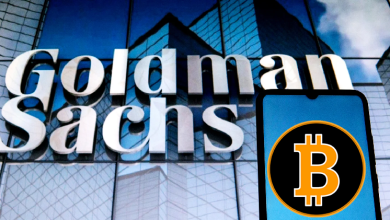
Imagine a scenario where Bitcoin plays a pivotal role in slashing the colossal $33 trillion U.S. national debt by nearly half. This ambitious concept, proposed by MicroStrategy CEO Michael Saylor, suggests that by acquiring one million Bitcoins over the next five years, the United States could potentially reduce its national debt by an astounding $16 trillion. This idea gains traction amidst discussions of the U.S. possibly holding 200,000 Bitcoins as reserves, a concept hinted at by former President Donald Trump.
The Power of a Bitcoin Reserve
Michael Saylor’s vision is centered around the strategic establishment of a Bitcoin Reserve for the United States. By likening Bitcoin to “digital gold,” Saylor emphasizes its potential role as a financial safe haven, akin to the historical reliance on gold. Holding a substantial Bitcoin reserve could not only bolster the U.S. dollar but also yield significant financial returns. Saylor argues that with one million Bitcoins, the U.S. might see a $16 trillion gain, substantially alleviating the national debt burden.
Political Backing and Support
This transformative vision is not just Saylor’s alone; it is gathering momentum within political circles. Senator Cynthia Lummis, a staunch advocate for Bitcoin, recently introduced a legislative proposal aiming for the U.S. to acquire one million Bitcoins over a five-year span. In a bold move, she suggested using a portion of the Federal Reserve’s gold reserves to fund this substantial Bitcoin acquisition.
Adding weight to this initiative, former President Donald Trump has also expressed his support for the idea. During the Bitcoin 2024 conference, he advocated for the U.S. government to maintain 200,000 Bitcoins as a strategic reserve, signaling a paradigm shift in economic strategy.
Bitcoin: More Than Just a Digital Currency
For Saylor, the concept of Bitcoin as a strategic asset is not revolutionary. He draws parallels to historical U.S. government investments in assets like gold, oil, and grain, which have traditionally yielded substantial financial returns. Saylor believes that Bitcoin could play a similarly transformative role in bolstering the U.S. economy.
Moreover, Saylor’s “Trump Max” scenario takes this concept even further. He envisions a scenario where the U.S. acquires four million Bitcoins, potentially generating an astronomical $81 trillion in returns. Saylor argues that such strategic investments in Bitcoin are not just rational but essential for fortifying the U.S. economy and securing the nation’s future prosperity.
Once perceived as a volatile digital asset, Bitcoin could evolve into a cornerstone of national economic policy, offering a new path to financial stability and growth. As discussions continue, the potential of Bitcoin as a strategic asset for the U.S. remains a topic of significant interest, inviting further exploration and debate.






